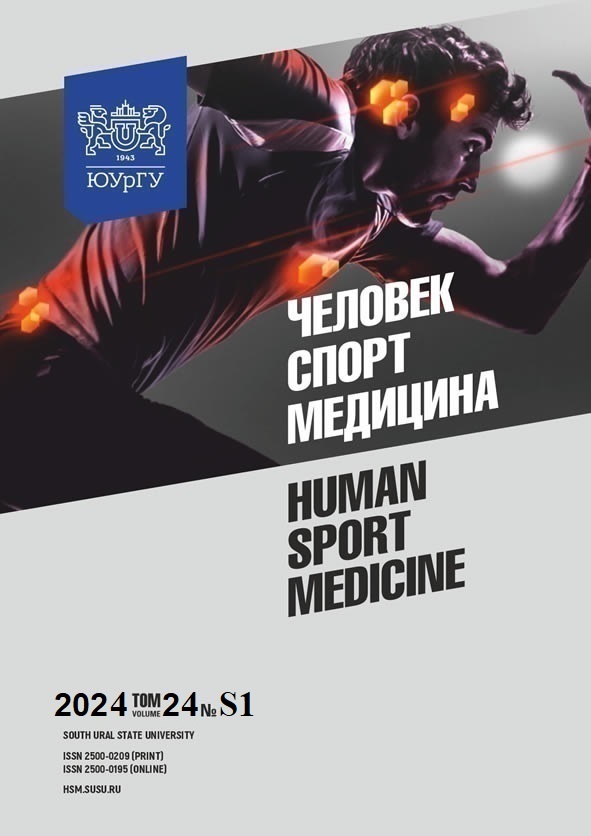CEREBRAL HEMODYNAMICS IN MECHANISMS OF ERGOGENIC EFFECTS
Abstract
Aim. This study aims to investigate the current state of cerebral blood circulation in relation to ergogenic substances. Materials and methods. This article presents a comprehensive analysis of the results of many years of research with the involvement of elite athletes. The methodology encompasses the evaluation of rheoencephalographic (REG) parameters to assess cerebral hemodynamics and the subsequent impact on athletic performance following the application of various ergogenic substances. Results. This section presents the findings regarding the alterations in REG data after extensive physical activity. A statistically significant alteration in hemispheric relations was observed for the majority of REG indicators, particularly in the context of severe fatigue. The restorative effects of electrosleep, utilizing electric pulse stimulation, were demonstrated in enhancing both systemic and, predominantly, cerebral hemodynamics, as well as positive changes in athletic performance. Systematic training with a respiratory simulator contributed to the normalization of cerebral circulation and the reduction of hemispheric asymmetry. Dietary supplements aimed at restoring microbiota balance and those derived from bee products were shown to enhance adaptive capabilities, as evidenced by heart rate variability, positively influencing athletic performance. The application of functional music and essential oils in conjunction with ergogenic substances led to improvements in cerebral hemodynamics, enhanced muscle coordination, and augmented the economy, efficiency, and effectiveness of muscle activity, as evidenced by short-distance running performance. Conclusion. The findings of this study underscore the synergistic effects of various ergogenic interventions, primarily through the optimization of cerebral hemodynamics, thereby highlighting the commonality of these means in enhancing athletic performance.
References
References on translit
Copyright (c) 2024 Human. Sport. Medicine

This work is licensed under a Creative Commons Attribution-NonCommercial-NoDerivatives 4.0 International License.















